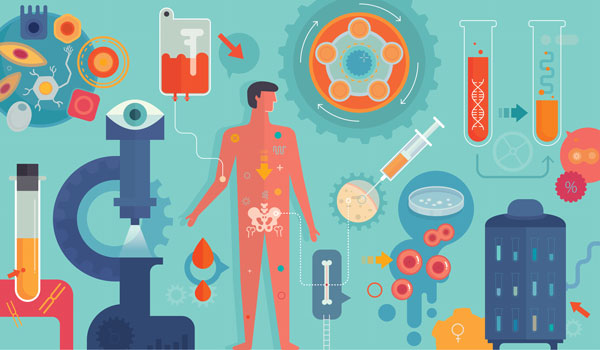 Add My Company
Add My Company

Cell and gene therapies are innovative approaches to treating diseases by harnessing the power of a patient's own cells or by introducing genetic material to correct or modify cellular functions. These therapies have the potential to revolutionise the field of medicine and provide new treatment options for a wide range of diseases, including genetic disorders, cancer, cardiovascular diseases, neurodegenerative disorders and autoimmune diseases.
Each therapy is tailored to address specific diseases and conditions. These therapies often involve living cells or genetic material, making them vulnerable to environmental factors that can compromise their effectiveness.
To address these concerns, cryogenic storage is commonly employed to preserve the quality of these therapies. Here are some key reasons why cryogenic storage is crucial:
Cell Preservation: Living cells used in cell therapies are highly sensitive to temperature fluctuations. Cryogenic storage prevents cellular damage, preserving the viability and functionality of the cells until they are administered to patients.
Long-Term Storage: Cryogenic storage is ideal for long-term preservation of cell and gene therapies, allowing these products to be stored for extended periods without significant loss of quality or effectiveness. Maintaining a consistent low-temperature environment in cryogenic storage helps ensure that each dose of the therapy is as effective as the last, promoting treatment consistency and reproducibility.
Patient Safety: Ensuring the viability and efficacy of cell and gene therapies is crucial for patient safety and successful treatment outcomes. Cryogenic storage helps minimise the risks associated with treatment failure due to product degradation.
Regulatory Compliance: Many regulatory authorities require strict temperature control and documentation for the storage and distribution of biologic products, including cell and gene therapies. Cryogenic storage helps organisations meet these regulatory requirements.
Temperature Stability: Cryogenic storage involves storing therapies at extremely low temperatures, typically below -150 degrees Celsius (-238 degrees Fahrenheit). This low temperature provides a stable environment that minimizes the risk of degradation or alteration of the therapeutic material.
Managing samples stored in cryogenic conditions is crucial to prevent cell damage and ensure sample integrity. Here are some key processes and considerations to minimise the risk of cell degeneration:
Sample Management System: Implement a well-organised sample management system that tracks the location, date of storage, as well as relevant information about each sample. This system should allow for easy retrieval and documentation of samples.
Use a robust database or laboratory information management system (LIMS) to manage sample records, which can help reduce human errors and ensure accurate tracking.
Specialised Racking: Utilise specialised cryogenic racks and boxes designed for cryopreservation. These racks are designed to maintain temperature stability and prevent cross-contamination between samples.
Ensure proper placement and organisation of samples within racks and boxes to prevent damage during retrieval.
 Minimise Exposure Time: Minimise the time that samples are exposed to higher temperatures during retrieval. Have a well-organised system in place to quickly locate and retrieve the required samples.
Minimise Exposure Time: Minimise the time that samples are exposed to higher temperatures during retrieval. Have a well-organised system in place to quickly locate and retrieve the required samples.
Temperature Monitoring of Vessels and Samples: Install temperature monitoring and alarm systems in cryogenic storage vessels, such as liquid nitrogen tanks or freezers, to continuously monitor and maintain the desired storage temperature.
Use temperature sensors within the vessels and on the sample containers themselves to ensure temperature uniformity and to alert personnel if temperatures deviate from the ideal range.
Regular Training and Quality Control: Conduct regular training sessions for personnel involved in sample retrieval and handling to keep them updated on best practices.
Perform quality control checks on sample quality and integrity after retrieval to detect any potential issues.
Transportation and Storage Needs: Transporting cryogenic cell and gene therapy materials is a critical and highly specialised process due to the extreme temperature requirements and the delicate nature of these materials.
Dry Shippers:
Dry shippers are commonly used for the transport of cryogenic materials. These containers are equipped with absorbent materials to manage any potential liquid nitrogen leakage.
Temperature Monitoring:
Install temperature monitoring and data logging systems to continuously track the temperature of the materials during transportation.
Select an Appropriate Shipping Carton:
Choose a specialised cryogenic shipping carton that is suitable for the volume and quantity of materials you need to transport.
Choose a reliable and experienced carrier or logistics company with expertise in transporting cryogenic materials. Communicate with the carrier to ensure they are aware of the specific requirements and hazards associated with the shipment.
In summary: Cryogenic storage is a critical component of ensuring the viability and efficacy of sensitive cell and gene therapies. It helps maintain the integrity of these therapies, allowing them to be safely administered to patients while providing long-term storage options for future use. Proper storage and handling of these therapies are essential to advance the field of regenerative medicine and personalised healthcare.
Contact us to discover how Biopharma Group can help you select the correct cryopreservation storage solutions to meet your cell and gene therapy requirements.
For more information on The role of Cryopreservation within Cell and Gene Therapy talk to Biopharma Group

